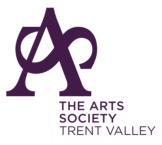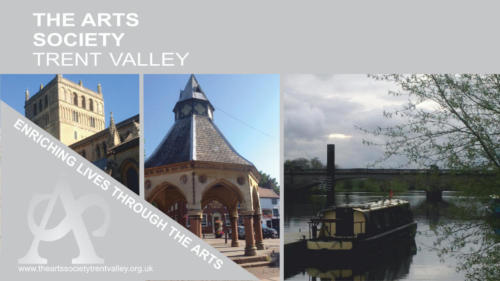Lectures
Membership year 2025-26
Doors will open at 10.15am when free tea/coffee and biscuits are available.
The meeting is called to order at 10.50am for the chairman’s welcome and notices followed
by the lecture from 11am-12noon.
5 November 25
Anthony Peers
Strictly Classical: The Style of the East India Company
By looking first at Madras, and then Calcutta – there is
an opportunity to look at the very best of the buildings
constructed in the heyday of the East India Company.
This lecture touches on the early 17th century origins of
the East India Company and considers the tentative
architectural endeavours of the amateur architects and
engineers working at the Company’s behest.
Study is made of Company’s magnificent late 18th and
early 19th century classical buildings, as well as of the
stunning late flowering of the Indo Saracenic in Madras
and the remarkable Edwardian Baroque of the Victoria
Memorial in Calcutta.
Photo: Vivienne Jarvis
3 December 2025
Sally Dormer
The Christmas Story in Medieval Art
It was during the Middle Ages that many of the familiar images
associated with the Christmas story were devised and
popularized: including the stable in Bethlehem inhabited by the ox
and ass.
What were the sources for these images? Are they always of
biblical origin?
This lecture, illustrated by images taken from sources as diverse
as illuminated manuscripts, church portals, liturgical vestments,
stained glass windows and goldsmiths’ work, will tell the stories
surrounding Christ’s birth and investigate the often surprising
sources for certain aspects of this well-known narrative.
Photo: Vivienne Jarvis
7 January 2026
Barbara Peacock
The Cult and Splendour of the artistic legacy of the Knights of St. John of Malta.
The arrival of the Knights of St John in
Malta in 1530 was the prelude to two and
a half centuries of remarkable building
and artistic activity.
Their heroic defeat of the Turks in the
legendary Great Siege of 1565 inspired
the building of the new city of Valetta, the
finest Renaissance fortified city in
Europe. The Grand Masters were great
patrons, commissioning numerous
magnificent works of art.
Dignitaries: Knights of Malt. After Antoine de
Favray (1706–1798)
Collection of the Museum of the Order of St
John
4 February 2026
Raymond Warburton
Modern British Sculpture: Moore, Hepworth, Caro, Frink
and others
This lecture focuses on the work and achievements of, and
challenges faced by leading sculptors based in Britain in the
20th century. They comprise Henri Gaudier-Brzeska, Jacob
Epstein, Henry Moore, Barbara Hepworth, Anthony Caro,
Elisabeth Frink and Antony Gormley.
In their different ways, they all embraced modernism, but some
more than others. Some looked to African, Oceanic and pre-
Columbian cultures, while others looked to Paris. Some
embarked on direct carving, while others modelled or shaped
their materials. Some embraced social and humanitarian
themes, while others opted for abstraction.
Photo: Vivienne Jarvis
4 March 2026
Paula Nuttall
Urbino: A Renaissance Palace and its Treasures
The ducal palace of Urbino is the most perfect of
Italian renaissance palaces. It was the creation of the
cultivated soldier-prince, Federigo da Montefeltro,
Duke of Urbino, a showcase for his prodigious wealth
and impeccable taste, and the setting for the ideal
renaissance court described in Castiglione’s
renaissance bestseller, The Book of the Courtier.
This lecture takes us on a tour of the palace, from the
exquisitely proportioned courtyard and vast throne
room, to the gemlike private study and functional
apartments such as the ducal bathroom and indoor
riding school. We also look at treasures that once adorned the palace, notably paintings by
Piero della Francesca.
Photo: Vivienne Jarvis
1 April 2026
Scott Anderson
Dale Chihuly and the American Glass Movement
American pioneers in glass technology from the late 19th century
onwards provided much of the innovative tradition that was to
bring about the birth of the Studio Glass Movement in the USA in
the 1960s.
Glass manufacturers such as Louis Comfort Tiffany developed
new blown shapes and technologies to create new surface
effects and an appearance of movement in glass that was to be
continued in the work of studio glass makers such as Dale
Chihuly.
The Studio Glass Movement dates from 1962, with its emphasis
on the aesthetics of form and colour now influencing studio art
glass makers everywhere.
Photo: Vivienne Jarvis
6 May 2026
John Osborne
Behind the Veil: the Arts of Islamic Persia
Iran has a sophisticated cultural heritage ignored in
the headlines. The main part of the lecture illustrates
the development of the spectacular architecture in
the mosques and palaces of Persia through the
Islamic period, with an emphasis on their brilliant
tilework and painting, including the splendid buildings
of Shah Abbas' early 17th century Isfahan. Persia’s
classic gardens are mentioned, and beautiful
examples of manuscript illustration (‘miniatures’) are
included.
The lecture explains how the Shi'a form of Islam
originated and became the ruling creed in the late
20th century Iran of Ayatollah Khomeini.
Photo: Vivienne Jarvis
3 June 2026
Imogen Corrigan
The Topsy Turvey World of Misericords
This lecture takes the audience on a tour of some of the
extraordinary images that exist in some 400 churches in
England. The art form was in vogue mainly from C13th – C15th
and rarely includes religious images despite the misericords
being positioned so close to the high altar. The secular,
sometimes bizarre and often profane nature of their subjects
meant that many survived the Reformation and later religious
enthusiasts.
Much social comment can be gleaned from these carvings even
though there are no records describing why particular images
were chosen and very often it is not possible to date them
accurately.
Photo: Vivienne Jarvis
1 July 2026 & AGM
Twigs Way
Impressions of Gardens: Gardens of the Impressionists
Planting and painting, cultivating and creating: inspired
and influenced by their dedication to painting ‘en plein
air’ artists of the Impressionist movement had an
especial relationship with gardens and landscape,
most famously expressed by Claude Monet (1840-
1926) at Giverny.
This talk explores that relationship drawing on the
wide range of gardens created and depicted by artists
including Gustav Caillebotte, Camille Pissarro, Pierre-
Auguste Renoir, Frederick Carl Frieseke, and Pierre
Bonnard, placing Giverny and Monet in a wider
perspective.
NOTE: 2026 is the centenary of the death of Claude Monet
Photo: Vivienne Jarvis
(AGM: please be seated by 10.30am)
Web site designed, created and maintained by Janet Groome,
Handshake Computer Training.


















